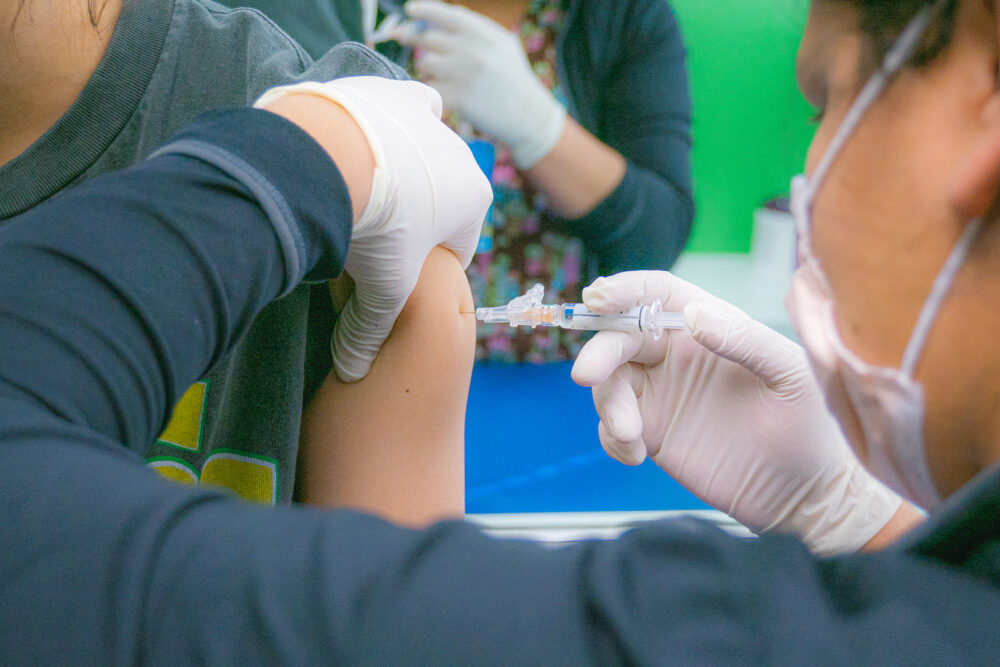
By Reese Meister
As many vaccinated Americans have received or plan to receive COVID-19 booster shots, developing countries still lack supply of even the first dose of the vaccination. These additional single doses of the Moderna, Pfizer-BioNTech or Janssen (Johnson & Johnson) vaccines aim to reduce the risk of death and hospitalization from the virus.
The US Food and Drug Administration (FDA) first approved COVID-19 booster vaccines on Oct. 20, with certain restrictions on the recipients. People older than 65 or any adult with high risk or exposure could originally receive the Moderna or Pfizer-BioNTech booster at least six months after having been fully vaccinated with a second dose. Any adult could instead opt for the Janssen booster just two months after becoming fully vaccinated.
The FDA has proven the safety and advantage of heterologous booster shots, meaning that an individual’s booster dose may be produced by a different company than their initial doses were. For example, a person who became fully vaccinated through Moderna may choose to have a Moderna, Pfizer-BioNTech or Janssen booster shot. Heterologous boosters have the same requirements and restrictions for distribution as a booster of the same primary vaccine company.
Booster access opened up to any fully vaccinated adult in California on Nov. 9, in a letter from the California Department of Public Health.
Vaccines and booster doses play an essential role in slowing the spread of COVID-19; however, to reduce the threat of this virus, it must be controlled worldwide. Wealthy countries have “stockpiled” vaccines, and wasted excess of doses will continue to grow even with the new availability of booster shots.
Airfinity, an English company that has gathered data about COVID-19, estimated that between one-third and one-half of vaccines provided to a group of wealthy countries, including the US, were not used. At this rate, these countries could collect around 1.2 billion wasted vaccines before next year. Some unused vaccines may be donated to other countries as promised, but about 50 million doses are forecasted to expire before that can happen.
This storage of additional vaccines is no longer necessary because of the predictability of steady production, yet wealthier countries continue to build up their supply. As of Nov. 10, about 65% of populations of wealthy countries had received full vaccination, while fewer than 3% of people in lower-income countries obtained this status.
During their COVID-19 Summit, the United Nations (UN) aimed for 70% of each country’s population to be vaccinated by the middle of next year. There are currently enough available vaccines to achieve this goal, but a combination of factors including the stockpiling of doses, the advent of booster shots and the inequitable distribution among countries have hindered their progress.
New variants of COVID-19 emerge when developing countries lack access to the vaccine, and this inequity also contributes to disparities among countries. This virus has increased poverty rates in developing countries, which lack resources to defend the population from its effects. In lower-income countries, it also more severely impacts an individual’s financial situation because the damage becomes more drastic in an already struggling economy. Ultimately, COVID-19 causes harm that works against the UN’s Sustainable Development Goals and widens the gap between developed and developing countries.
Costs for a dose of the vaccine range from $2 to $27 plus an additional 3.70 for distribution. The accumulated costs for vaccines add up to more than the average annual health care costs for many developing countries.
The COVID-19 Vaccine Global Access Facility (COVAX), an organization of 141 participants that formed in April 2020, strives to support vaccine equity and global distribution by giving low-income countries what they need rather than only what they can afford.
Through COVAX, wealthier countries have promised 1.3 billion doses in donations but have only provided 356 million so far. African United Nations Children’s Fund ambassadors sent a letter to members of G20, a group made up of the wealthiest countries, to address the urgency of their situation. While countries agreed to donate in 2022, many African nations need them sooner, hoping for donations by Dec. 2021.
Sub-Saharan African countries have received about 15 times fewer COVID vaccines per capita compared to G20 members. Overall, fewer than 5% of people in Africa have received full vaccination.
In addition to having few vaccines, many African countries lack the necessary supply of healthcare workers, transportation and methods of distribution. Fewer than 10% of healthcare workers in Africa have received full vaccination, which creates a greater risk for the already scarce number of workers. Additionally, it backtracks progress in development that African countries have worked to achieve in recent years.
Ultimately, economies of more developed countries are on track to recover partially from the pandemic by 2022, while those of developing countries may recover in 2024. The COVID-19 virus will continue to spread and develop so long as low-income countries lack what they need to prevent its progress.





